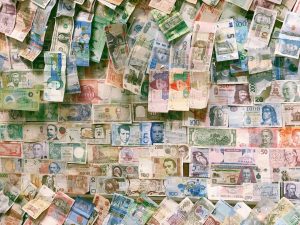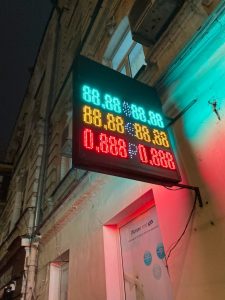Foreign exchange and money markets are two interrelated components of the global financial system. Foreign exchange (forex) refers to the buying and selling of currencies, while the money market is a market for short-term debt securities, including treasury bills, commercial paper, and certificates of deposit. In AP macroeconomics, the relationship between forex graphs and money market graphs is crucial. This article will explain how forex graphs and money market graphs are related in AP macroeconomics.
Forex Graphs
Forex graphs are graphical representations of the exchange rate between two currencies. The exchange rate is the price of one currency in terms of another. For example, if the exchange rate between the US dollar and the Euro is 1.10, it means that one US dollar is equal to 1.10 Euros. Forex graphs plot the exchange rate over time, usually in daily or weekly intervals.
Forex graphs are used to analyze and predict currency movements. Currency exchange rates are determined by supply and demand in the forex market. Factors that affect supply and demand include interest rates, inflation, political stability, and economic growth. For example, if the US economy is growing faster than the Eurozone economy, demand for dollars will increase, and the dollar’s exchange rate will rise relative to the Euro.
Money Market Graphs
Money market graphs are graphical representations of the interest rates on short-term debt securities. The money market is a market for short-term borrowing and lending, usually for periods of less than one year. The interest rates in the money market are determined by supply and demand for short-term debt securities.
Money market graphs show the relationship between interest rates and the quantity of money borrowed and lent. The demand for money is the amount of money that borrowers are willing to borrow at a given interest rate. The supply of money is the amount of money that lenders are willing to lend at a given interest rate. The intersection of the demand and supply curves determines the equilibrium interest rate in the money market.
Relationship between Forex Graphs and Money Market Graphs
The relationship between forex graphs and money market graphs is based on the concept of interest rate parity. Interest rate parity is the idea that the interest rate differential between two countries should be equal to the expected change in the exchange rate between their currencies. In other words, if the interest rate differential between the US and the Eurozone is 2%, the exchange rate should be expected to change by 2%.
Interest rate parity has important implications for both forex and money market graphs. In the forex market, interest rate differentials affect the demand for currencies. If the interest rate in the US is higher than in the Eurozone, investors will demand more US dollars, increasing the dollar’s exchange rate relative to the Euro. In the money market, interest rate differentials affect the supply of money. If the interest rate in the US is higher than in the Eurozone, lenders will supply more dollars, decreasing the interest rate in the US money market relative to the Eurozone money market.
The relationship between forex and money market graphs can be illustrated using an example. Suppose the interest rate in the US is 2% and the interest rate in the Eurozone is 1%. According to interest rate parity, the exchange rate between the US dollar and the Euro should be expected to change by 1%. If the current exchange rate is 1.10, it should be expected to change to 1.11. If the exchange rate does not change, there will be an arbitrage opportunity, where investors can borrow in the currency with the lower interest rate and invest in the currency with the higher interest rate, earning a risk-free profit.
Conclusion
In conclusion, forex and money market graphs are closely related in AP macroeconomics, as they are both influenced by interest rate differentials and interest rate parity. Forex graphs show the exchange rate between two currencies, while money market graphs show the interest rates on short-term debt securities. Interest rate parity ensures that the interest rate differential between two countries is equal to the expected change in the exchange rate between their currencies. Understanding the relationship between forex and money market graphs is crucial for analyzing the global financial system and making informed investment decisions.





